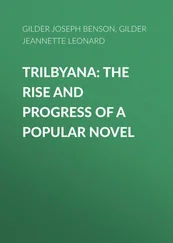Wilhelm Joseph von Wasielewski - The Violoncello and Its History
Здесь есть возможность читать онлайн «Wilhelm Joseph von Wasielewski - The Violoncello and Its History» — ознакомительный отрывок электронной книги совершенно бесплатно, а после прочтения отрывка купить полную версию. В некоторых случаях можно слушать аудио, скачать через торрент в формате fb2 и присутствует краткое содержание. Жанр: foreign_antique, foreign_home, music_dancing, на английском языке. Описание произведения, (предисловие) а так же отзывы посетителей доступны на портале библиотеки ЛибКат.
- Название:The Violoncello and Its History
- Автор:
- Жанр:
- Год:неизвестен
- ISBN:нет данных
- Рейтинг книги:3 / 5. Голосов: 1
-
Избранное:Добавить в избранное
- Отзывы:
-
Ваша оценка:
- 60
- 1
- 2
- 3
- 4
- 5
The Violoncello and Its History: краткое содержание, описание и аннотация
Предлагаем к чтению аннотацию, описание, краткое содержание или предисловие (зависит от того, что написал сам автор книги «The Violoncello and Its History»). Если вы не нашли необходимую информацию о книге — напишите в комментариях, мы постараемся отыскать её.
The Violoncello and Its History — читать онлайн ознакомительный отрывок
Ниже представлен текст книги, разбитый по страницам. Система сохранения места последней прочитанной страницы, позволяет с удобством читать онлайн бесплатно книгу «The Violoncello and Its History», без необходимости каждый раз заново искать на чём Вы остановились. Поставьте закладку, и сможете в любой момент перейти на страницу, на которой закончили чтение.
Интервал:
Закладка:
Corrette gives already in his violoncello tutor (1741) instructions for accompanying recitative. These directions are, however, by no means exhaustive; such are first found in the cello tutor compiled for the Paris Conservatoire by De Baillot, Levasseur, Catel, and Baudiot, which appeared in print in 1804. Therein it is said:
“In order to accompany well a recitative, a complete knowledge of harmony and of the violoncello is necessary; one must be intimate with figured basses, and know how to execute them readily. He who can do this has reached the summit of art; for it presupposes a great deal of necessary information, and still more the power of judging how to turn it to account.
“If the bass player is not certain of the resolutions of discords, if he is unable positively to indicate to the singer when he is to make a complete or a broken cadence, if in his concords he does not know how to avoid forbidden fifths and octaves—he is in danger of confusing the singer, and in any case he will produce a most disagreeable effect.
“As in good compositions, a recitative always follows a well-defined progression and adapts itself to the character of the part, to the situation portrayed, and to the voice of the singer: in the accompaniment—1. The strength of the tone must be regulated according to the effect to be produced, for the accompaniment must sustain and embellish the singing and not spoil and drown it. 2. The chord must not be repeated, except when the harmony changes. 3. The accompaniment must be quite simple, without flourishes or runs. Good accompanying always has in view the best rendering of the subject, and when the player allows himself to fill up certain gaps with a short interlude, this must only consist of the notes of the chord. 4. The chord must be played without Arpeggio, ordinarily in the following manner”— 48 48 The French call this kind of recitative accompaniment “le recitatif italien.”

Baudiot in his violoncello tutor, which appeared later than the above, makes the following remark concerning the accompaniment of recitative: “It sometimes happens that the actors linger on the scene without reciting (speaking), be it that they have forgotten the text of what they have to recite, or that for some other reason they are silent. At times their appearance on the boards is delayed. In such cases, the accompanist ( i.e. , the cellist) can perform short preludes and embellishments at his pleasure. But he must be modest about it, and employ his ornaments at the right moment, and always with taste.” 49 49 Accompanying the recitative with the cello was customary far into our century. I heard it in Italy at the representation of the old operas up to the year 1873. I am unable to say if the practice is continued. It has been abolished in Germany for the last ten years.
To the art of violoncello making the same applies as to the violin. The productions of the Italian makers surpass those of all other nations. Amongst them, those manufactured by Nicholas Amati, Stradivari, and Gius. Guarneri del Gesù are most to be preferred and justly so. 50 50 The widespread opinion that Gius. Guarneri of the Gesù did not make violoncellos is unfounded. Aug. Riecher informs me that Major H–r, in Berlin, is in possession of a cello which is undoubtedly genuine. Yet it seems as if this member of the Guarneri family had only made a limited number.
Stradivari and Amati made their cellos of two different sizes; the larger one was formerly called “il Basso,” while the smaller was distinguished as the Violoncello proper. The latter is the more preferable as being more manageable; in these days it is used as a valuable model.
As to the violoncello bow, which had the following form in the first half of the eighteenth century, 51 51 The above sketch is taken from Corrette’s Violoncello Tutor, which was published in 1741.
its progress went hand in hand with that of the violin bow. The improvements which were successively made on the latter were effected on the former. The greatest perfection reached by the bow was the work of a Frenchman, François Tourte. To this day he has never been excelled in this department. (See Appendix A Конец ознакомительного фрагмента. Текст предоставлен ООО «ЛитРес». Прочитайте эту книгу целиком, купив полную легальную версию на ЛитРес. Безопасно оплатить книгу можно банковской картой Visa, MasterCard, Maestro, со счета мобильного телефона, с платежного терминала, в салоне МТС или Связной, через PayPal, WebMoney, Яндекс.Деньги, QIWI Кошелек, бонусными картами или другим удобным Вам способом.
.)

The fabrication, however, of good violin and cello bows has latterly become very general; and especially in Markneukirchen the manufacture of bows as well as instruments has received a great impulse. 52 52 In my paper “The Violin and its Masters,” second edition (Breitkopf and Härtel), I have given a more detailed account of it as well as of the productions of the Italian, German, and French masters, which it is unnecessary to repeat here. See also the fabrication of musical instruments in Saxon Voigtland, by Fürstenau and Berthold, 1876.
The Art of Violoncello Playing In the Eighteenth Century
In the seventeenth century the violoncello still occupied a very subordinate and modest position; during the period mentioned, with very few exceptions, it was employed only as a bass instrument in the orchestra. At the beginning of the eighteenth century, however, there was already a great change; for Mattheson says in his “Neu eröffneten Orchestre,” which appeared in 1713:—
“The prominent Violoncello, the Bass Viol, and the Viola da Spalla are small bass fiddles (viols) similar to the larger ones, with five or six strings, on which can be played all kinds of quick things, variations and movements much more easily than on the larger machines” (Mattheson means the contra-basso). 53 53 Mattheson expresses himself about this in his original manner as follows: “The growling Violone (French, Basse de Violon; German, Grosse Bass Geige) is quite twice the size of the former, sometimes even more, consequently the strings, in thickness and length, are in proportion. They are of sixteen-feet tone, and most useful on the stage as a solid foundation for polyphonous pieces, such as choruses and similar things, as well as for airs and recitatives; its deep humming tone penetrates farther than the clavier and other bass instruments. It must, however, be heavy work if one has to practise this monster for three or four hours unceasingly.”
It is, therefore, quite conceivable that some time was necessary, before the players, who were unaccustomed to the undivided fingerboard of the cello, were sufficiently confident of a finger technique differing so completely from that of the gamba. They were at first limited to the lower part of the fingerboard, as was the case primarily with the violin. 54 54 Concerning this, I refer to my work “The Violin and its Masters,” second edition, 1883. (Breitkopf and Härtel, Leipsic.)
The position of the thumb, by means of which the higher and highest positions on the fingerboard could alone be fixed and maintained with certainty, could hardly have been known before the beginning of the eighteenth century. The violoncello at this time, as appears from Mattheson’s account just mentioned, had sometimes a set of five or even six strings like the gamba. On the five-stringed instruments the tuning was:—
Интервал:
Закладка:
Похожие книги на «The Violoncello and Its History»
Представляем Вашему вниманию похожие книги на «The Violoncello and Its History» списком для выбора. Мы отобрали схожую по названию и смыслу литературу в надежде предоставить читателям больше вариантов отыскать новые, интересные, ещё непрочитанные произведения.
Обсуждение, отзывы о книге «The Violoncello and Its History» и просто собственные мнения читателей. Оставьте ваши комментарии, напишите, что Вы думаете о произведении, его смысле или главных героях. Укажите что конкретно понравилось, а что нет, и почему Вы так считаете.












![Edward Ellis - Adrift on the Pacific - A Boys [sic] Story of the Sea and its Perils](/books/753342/edward-ellis-adrift-on-the-pacific-a-boys-sic-s-thumb.webp)